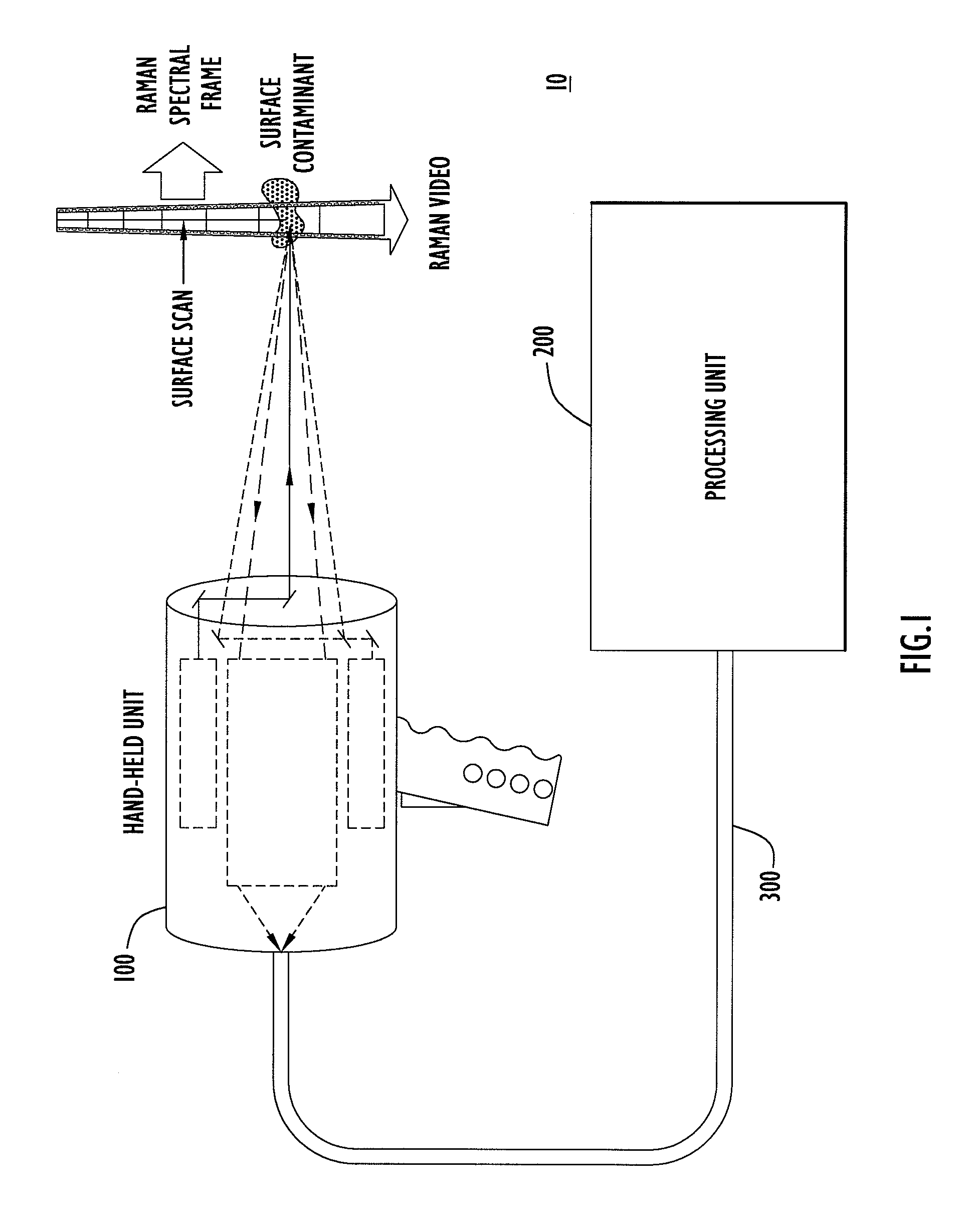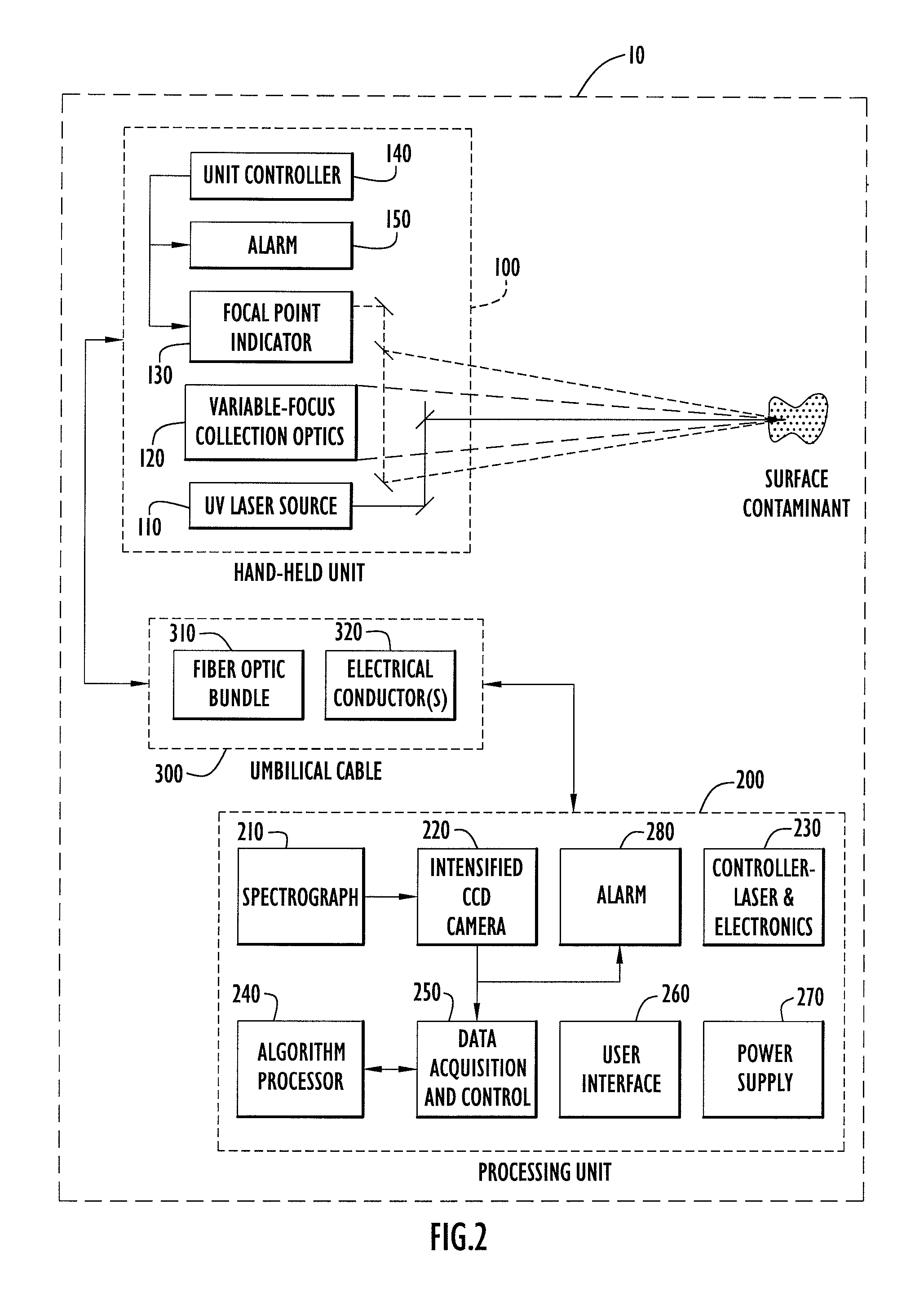Method, apparatus and system for rapid and sensitive standoff detection of surface contaminants
a technology of surface contaminants and standoff detection, applied in the field of applied ultraviolet (uv) raman spectroscopy and chemical detection and identification, can solve the problems of contamination on the surface, none of the above mentioned methods provide adequate detection capabilities, etc., and achieve fast and sensitive standoff, high data throughput, and high spatial resolution
- Summary
- Abstract
- Description
- Claims
- Application Information
AI Technical Summary
Benefits of technology
Problems solved by technology
Method used
Image
Examples
Embodiment Construction
[0025]Referring first to FIGS. 1 and 2, a standoff hazard detection system 10 according to an embodiment of the invention is described. The detection system 10 comprises a hand-held unit 100 and a processing unit 200. The hand-held unit 100 is also referred to herein as a first unit or a “wand” unit or device and the processing unit 200 is also referred to herein as a second unit or a data acquisition / processing unit. The hand-held unit 100 is connected by an umbilical cable 300 to the processing unit 200. As used herein, the term “standoff” in connection with a standoff hazard detection and identification system means a distance or range of more than 0.25 meters between the detecting apparatus and the surface that is being interrogated and on which a hazardous substance or contaminant may reside.
[0026]The system 10 achieves fast and sensitive standoff surface-hazard detection with high data throughput, high spatial resolution and high degree of pointing flexibility. This distinctiv...
PUM
 Login to View More
Login to View More Abstract
Description
Claims
Application Information
 Login to View More
Login to View More - R&D
- Intellectual Property
- Life Sciences
- Materials
- Tech Scout
- Unparalleled Data Quality
- Higher Quality Content
- 60% Fewer Hallucinations
Browse by: Latest US Patents, China's latest patents, Technical Efficacy Thesaurus, Application Domain, Technology Topic, Popular Technical Reports.
© 2025 PatSnap. All rights reserved.Legal|Privacy policy|Modern Slavery Act Transparency Statement|Sitemap|About US| Contact US: help@patsnap.com



